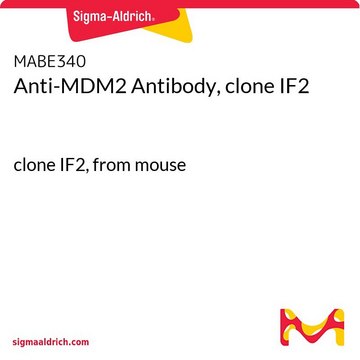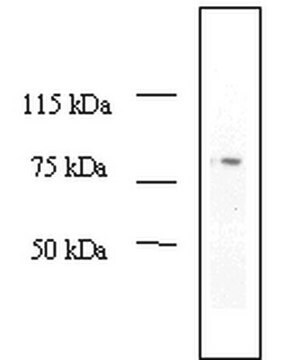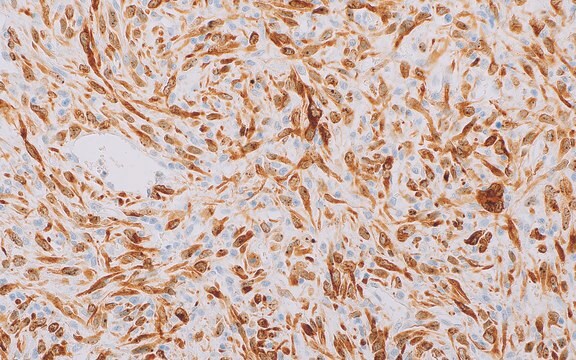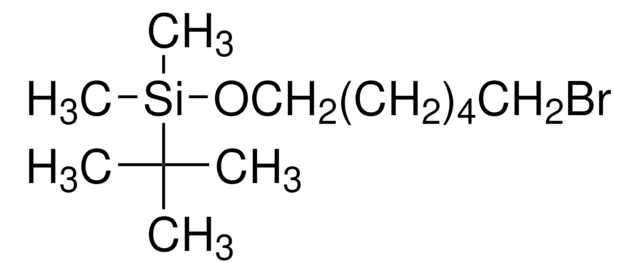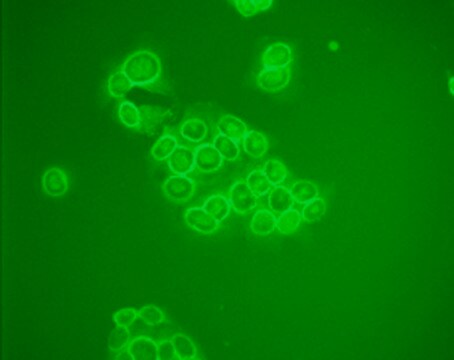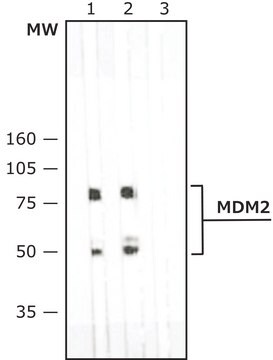MABE281
Anti-MDM2 Antibody, clone 2A10
clone 2A10, from mouse
别名:
E3 ubiquitin-protein ligase Mdm2, Double minute 2 protein, Hdm2, Oncoprotein Mdm2, p53-binding protein Mdm2
登录查看公司和协议定价
所有图片(1)
About This Item
分類程式碼代碼:
12352203
eCl@ss:
32160702
NACRES:
NA.41
無性繁殖:
2A10, monoclonal
application:
IP
WB
WB
物種活性:
human
技術:
immunoprecipitation (IP): suitable
western blot: suitable
western blot: suitable
citations:
32
推荐产品
生物源
mouse
品質等級
抗體表格
culture supernatant
抗體產品種類
primary antibodies
無性繁殖
2A10, monoclonal
物種活性
human
技術
immunoprecipitation (IP): suitable
western blot: suitable
同型
IgG2aκ
NCBI登錄號
UniProt登錄號
運輸包裝
wet ice
目標翻譯後修改
unmodified
基因資訊
human ... MDM2(4193)
一般說明
MDM2 is an E3 ubiquitin ligase that is most widely studied for its role in regulating the p53 tumor suppressor. MDM2 antagonizes the transcriptional activity of p53 in two main ways. The N-terminal of MDM2 interacts and disables the transactivation domain of p53. In addition, the C-terminal E3 ligase region of MDM2 can attach monoubiquitin to p53 resulting in the transport of p53 from the nucleus to the cytoplasm, thereby preventing the interaction of p53 with target DNA sequences. In addition, MDM2 may also attach polyubiquitin chains to p53, resulting in the degradation of p53 by the proteosome. MDM2 may produce these effects in cooperation with the Mdmx protein. Overall, MDM2 inhibits the ability of p53 to induce cell cycle arrest or apoptosis, and may contribute to oncogenesis.
應用
Anti-MDM2 Antibody, clone 2A10 is a Mouse Monoclonal Antibody for detection of MDM2 also known as E3 ubiquitin-protein ligase Mdm2 or Hdm2 & has been validated in WB & IP.
Immunoprecipitation Analysis: A representative lot was used by an independent laboratory in human lymphoblastoid cell line (NL553) treated with NCS. (Khosravi, R., et al. (1999). PNAS. 96(26):14973–14977.)
品質
Evaluated by Western Blot in A-549 cell lysate.
Western Blot Analysis: 0.5 µg/mL of this antibody detected MDM2 on 10 µg of A-549 cell lysate.
Western Blot Analysis: 0.5 µg/mL of this antibody detected MDM2 on 10 µg of A-549 cell lysate.
標靶描述
~90 kDa observed. The calculated molecular weight is 55 kDa, however MDM2 has been shown as a ~90 kDa band in western blots (Erhardt, P., et al. (1997). The Journal of Biological Chemistry. 272:15049-15052.). Uniprot describes many isoforms between 12-56 kDa, which can be highly phosphorylated and ubiquitinated.
外觀
Format: Purified
Purified mouse monoclonal IgG2aκ cultured supernatant in buffer containing 0.1 M Tris-Glycine (pH 7.4), 150 mM NaCl with 0.05% sodium azide.
分析報告
Control
A-549 cell lysate
A-549 cell lysate
其他說明
Concentration: Please refer to the Certificate of Analysis for the lot-specific concentration.
未找到合适的产品?
试试我们的产品选型工具.
儲存類別代碼
12 - Non Combustible Liquids
水污染物質分類(WGK)
WGK 1
閃點(°F)
Not applicable
閃點(°C)
Not applicable
Oliver Bischof et al.
Molecular cell, 22(6), 783-794 (2006-06-24)
Cellular senescence and apoptosis have evolved to restrain unwarranted proliferation of potentially tumorigenic cells. Here we show that overexpression of the E3 SUMO ligase PIASy in normal human fibroblasts recruits the p53 and Rb tumor suppressor pathways to provoke a
Shunbin Xiong et al.
Cancer research, 70(18), 7148-7154 (2010-08-26)
High levels of the critical p53 inhibitor Mdm4 is common in tumors that retain a wild-type p53 allele, suggesting that Mdm4 overexpression is an important mechanism for p53 inactivation during tumorigenesis. To test this hypothesis in vivo, we generated transgenic
Andrés Pizzorno et al.
Scientific reports, 8(1), 3746-3746 (2018-03-01)
The interplay between influenza A viruses (IAV) and the p53 pathway has been reported in several studies, highlighting the antiviral contribution of p53. Here, we investigated the impact of IAV on the E3-ubiquitin ligase Mdm2, a major regulator of p53
Chiao-En Wu et al.
Cancers, 13(15) (2021-08-08)
Intrahepatic cholangiocarcinoma (iCCA) is an adenocarcinoma arising from the intrahepatic bile duct. It is the second most common primary liver cancer and has a poor prognosis. Activation of p53 by targeting its negative regulators, MDM2 and WIP1, is a potential
P Erhardt et al.
The Journal of biological chemistry, 272(24), 15049-15052 (1997-06-13)
Programmed cell death is mediated by members of the interleukin 1-beta convertase family of proteases, which are activated in response to diverse cell death stimuli. However, the key substrates of these proteases that are responsible for apoptotic cell death have
我们的科学家团队拥有各种研究领域经验,包括生命科学、材料科学、化学合成、色谱、分析及许多其他领域.
联系技术服务部门